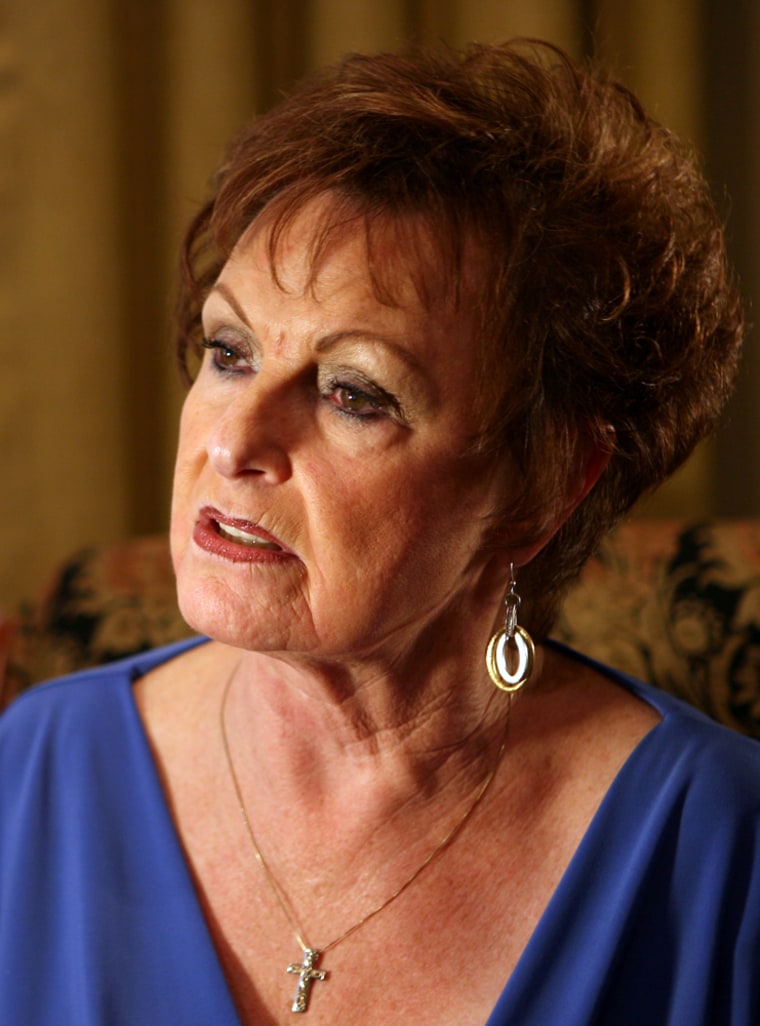When Bob Goodrich’s longtime doctor started providing premium care only to patients who paid a $1,600 annual fee, the 63-year-old felt he had no choice but to write a check.
His wife, Marjorie, 64, was sick with a serious adrenal disorder and nervous about having to switch doctors. And she was drawn to the longer appointments, personal attention and 24/7 access that Dr. Susan Debin promised the new “concierge” arrangement would provide.
But with already-high monthly insurance premiums and constant cash outlays for co-payments and deductibles, the family couldn’t afford two elite medical memberships.
So Goodrich, a retired parks director, gambled that his own high blood pressure wouldn’t get worse. He paid the fee for his wife — but not for himself.
“I’m old school,” he said. “The women and the children go in the lifeboat first.”
The Goodriches’ dilemma is becoming more common as a growing number of doctors enact their own brand of health reform. These physicians are opting out of the system, with some doctors dumping insurance companies altogether and others forcing patients to pay thousands of dollars in cash to keep the care they’re accustomed to. (Read the companion article: Clinic with two doors, a symbol of two-tier care.)
Doctors often tout this model as “concierge” care — you get more if you pay more. But for some patients, the flip side of this arrangement feels more like pay more or get less.
“It did leave me up the creek,” said Lilly Manning, 74, of Vienna, Va., who left her doctor of 15 years after he began charging patients $1,500 a year to remain in his practice. “I don’t think it’s right. I think a doctor should take anybody.”
5,000 concierge doctors — and growing
As many as 5,000 doctors nationwide have opted for full or partial concierge practices. Surveys suggest that number could quadruple within the next few years.
The result, critics say, is a segregated system that offers extra access for extra cash, even as it escalates a looming health care crisis for everyone else. And there’s nothing in the current health reform bills being considered in Congress to stop it.
“These practices exacerbate a fundamental problem in our health care system, which is this health care chasm between the haves and the have-nots,” said, Laura Weil, director of the health advocacy program at Sarah Lawrence College in Bronxville, N.Y., and an analyst of concierge care.
Here’s how concierge medicine works: Doctors charge anywhere from $1,500 per person per year up to $25,000 or more for a family. This fee acts as a retainer on top of all the insurance-covered services.
In some programs, those who don’t pay are forced to leave the practice. In others, they’re likely to see a nurse practitioner, a physician assistant or a newer, different doctor hired to handle the traditional patients.
The move to smaller, premium practices will worsen an already dire shortage of primary care doctors, creating an elite group of well-compensated physicians who see fewer and fewer upscale patients, dumping the rest on their increasingly harried colleagues, critics contend.
The U.S. is short by between 40,000 and 50,000 primary care doctors now, a figure that’s expected to top 125,000 by 2020, according to the American Academy of Family Physicians. That means people who don’t want or can’t afford concierge plans will have a harder time than ever finding a doctor.
But proponents of direct-pay and concierge care say the new models are the result of frustrated doctors defecting from a broken medical system, one that forces physicians to see too many patients for too little pay and with too much red tape.
Plus, plenty of patients are eager for this kind of personalized care — and are willing to pay for it.
“This is a multi-tiered health system and has been for a number of years,” said Darin Engelhardt, president of MDVIP, a network of some 300 concierge doctors based in Boca Raton, Fla. “What we’re offering is simply a choice along the health care continuum.”
Premium care for the price of a latte
Engelhardt and others reject charges of elitism, saying that paying extra for medical care is no different than affording other amenities of modern life, like a $4 daily latte or a fancy cell phone plan.
“Unless someone is prepared to suggest that a cell phone is an elitist instrument,” he said. “I don’t see it.”
The movement toward concierge care has exploded in recent years. Five years ago, there were 250 concierge doctors in the nation, serving perhaps 100,000 patients. Today, more than 5,000 primary care doctors run retainer practices serving 500,000 patients, according to the Society for Innovative Medical Practice Design, a concierge association.
An additional 7 percent of doctors surveyed in 2008 by the independent Physicians Foundation plan to switch to a concierge practice within three years.
In a parallel trend, more doctors are rejecting insurance and opting for cash-only payments. Nearly 12 percent of doctors had no managed care contracts in 2007, up from nearly 10 percent in 2004, according to the Centers for Disease Control and Prevention.
During that period, the percentage of doctors’ revenue that didn’t come from private insurance, Medicare or Medicaid jumped from more than 9 percent to more than 13 percent, the CDC said.
For docs, a lucrative choice
Doctors who make the switch to concierge practices find it’s a lucrative choice. At MDVIP, which franchises concierge-only arrangements, doctors limit their practices to 600 patients. At $1,500 apiece, that amounts to $900,000 a year. Even with the 33 percent the agency charges for administrative fees, it’s still $600,000 for the docs, in addition to insurance reimbursements.

Bob Goodrich’s physician, Dr. Susan Debin, signed up two years ago with Concierge Choice Physicians to start a “hybrid” model that contracts with 125 concierge patients from a practice of about 5,000.
Debin now tends first to the concierge patients, who bring in $200,000 annually at $1,600 a pop. Another full-time doctor and a staff of four nurse practitioners usually cover the rest of Debin’s patients.
For the Goodriches, the differences are clear. When Marjorie Goodrich goes to the doctor, she doesn't sit in the regular waiting room that her husband uses, with its close-set chairs and drab paint. She enters a different door in back, where plush chairs, fresh coffee and bottled water are available. More important, she sees Debin every time, while her husband typically sees a newer doctor or a nurse practitioner.
That’s OK with Bob Goodrich, who regards the arrangement as a small sacrifice for his wife’s health — and peace of mind.
“I felt that our life would just be affected too much if (she) had to change doctors,” he said.
It's pressure, not pay, that motivates some
Debin, 64, said money wasn’t the reason she switched to a hybrid concierge practice after 25 years of primary care. Instead, it was the grueling pace of insurance-dominated care, where high demand and low reimbursements had her seeing 40 patients a day and reviewing charts until 2 a.m.
Worse, it was barely possible to assess illness, let alone prevent it, which attracted Debin to primary care in the first place.
“I was passionate to do this and to practice a certain kind of medicine.” Now, she says, she can.
For the $1,600 fee, her concierge patients receive a comprehensive physical exam and preventive advice. Those clients are guaranteed premium appointments that begin on time and last 30 minutes, vs. 20 minutes for traditional clients. The extra fee also buys a small USB drive containing the patient’s medical records, and the big lure: 24/7 access, including Debin’s personal cell phone number.
For patients like breast cancer survivor Mary Ann Scherrey, 64, of Whittier, Calif., the extras are worth the price. A patient of Debin’s for 23 years, she didn’t know what to expect when she was invited to a town-hall meeting to hear her doctor’s new plans.
By the end of the night, however, Scherrey and her husband had decided to join. Scherrey, who works at an insurance agency primarily to ensure health coverage, said top-quality medical care should be available to anyone willing to pay for it.

Good medical care is also crucial to Lilly Manning, the Virginia woman whose doctor started a concierge-only practice 18 months ago. But she said she was appalled at the cost of the concierge practice — and the philosophy behind it.
“People are having enough trouble getting insurance, and he wants to have this elite practice?” said Manning, who was recently diagnosed with throat cancer by her new doctor. “I just think it’s really unethical.”
Despite the attention being lavished on health reform, none of the proposals now in play is likely to change the way doctors are paid, which is the key to actual overhaul, according to Weil, the concierge care analyst.
“We’re really not going to create any structural change in the system itself,” Weil said. “We’re going to increase people’s access to insurance.”
Plans likely to grow under health reform
Indeed, backers of concierge and other practices say they regard health reform as a growth opportunity. A greater emphasis on preventive care and personal choice will highlight what they do best — and underscore the benefits of paying extra, said Wayne Lipton, the managing partner of New York-based Concierge Choice Physicians.
“The public is often unrealistic,” Lipton said, “and forgets that, one, someone has to pay the bill, and two, you get what you pay for.”
